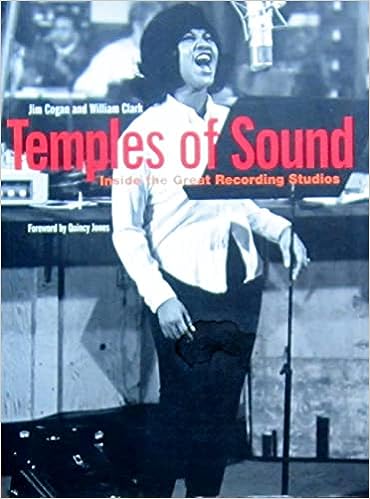John Marks’ Bookshelf for Lovers of Recordings #7
A DOZEN BOOKS REVIEWED, ONE A WEEK FOR THE NEXT TWELVE
Here are notes on a selection from my favorite books on the history of recording technology, the history of the record business, and the interactions between recording technology, the record business, and the art of music. One example of what I mean by all that is, in the late 1920s, piezoelectric “crystal” microphones supplanted carbon microphones for radio broadcasting.
Crystal microphones had a better signal-to-noise ratio than carbon microphones. Therefore, the live singers on radio could sing more quietly and intimately. They no longer had to shout to be heard. However, the quartz, mica, or other crystal elements were also more fragile than had been the carbon microphones. So, “shouters” like Al Jolson were out; and “crooners” like Rudy Vallee were in. (Trivia bit: Rudy Vallee graduated from Yale, with a degree in Philosophy.)
This list will be presented as a series of weekly installments. Rather than attempt to rank such diverse books from “Best” to “Somewhat Less Best,” this list is organized both chronologically and categorically. JM
The Bookshelf:
1. The Fabulous Phonograph, 1877-1977
2. The Label: The Story of Columbia Records
3. Do Not Sell at Any Price
4. The B Side: The Death of Tin Pan Alley and the Rebirth of the Great American Song
5. Something in the Air: Radio, Rock, and the Revolution That Shaped a Generation
6. Flowers in the Dustbin: The Rise of Rock and Roll, 1947-1977
7. Temples of Sound: Inside the Great Recording Studios
8. Goodnight, L.A.: The Rise and Fall of Classic Rock -- The Untold Story from inside the Legendary Recording Studios
9. Making Rumours: The Inside Story of the Classic Fleetwood Mac Album
10. Backstory in Blue: Ellington at Newport ‘56
11. A Love Supreme: The Story of John Coltrane’s Signature Album
12. The Vinyl Frontier: The Story of NASA s Interstellar Mixtape
Temples of Sound: Inside the Great Recording Studios
by Jim Cogan and William Clark; Foreword by Quincy Jones
San Francisco: Chronicle Books, 2003. Softcover, 224 pp. ISBN 0811833941.
This book is organized into 15 principal chapters, each dedicated to a particular recording studio and the artists most closely identified with it. The authors’ approach is to blend business history, technical information, musical history and analysis, and social commentary. That approach works very well in avoiding the disconnected dryness that a single-minded focus on glorified equipment lists would bring. The authors are more concerned with how each studio as a whole—especially taking into account the human factor—contributed to the making of the records.
The 15 studio chapters are organized on both geographical (west to east) and temporal (late 1940s to late 1970s) continua. The book starts off in California, with the early history of Capitol Records and the later construction of its own office building, which included studios. Next is United Western, famous for the Beach Boys’ Pet Sounds sessions, and Sunset Sound, where the Doors’ studio albums and James Taylor’s Sweet Baby James were recorded.
The focus then moves to Nashville (the Everly Brothers, Roy Orbison, later Elvis), Memphis (early Elvis, Jerry Lee Lewis, Otis Redding), and New Orleans (Fats Domino, Little Richard); then Chicago (Howlin’ Wolf, Muddy Waters, Rolling Stones) and Detroit (Marvin Gaye, Supremes, Stevie Wonder); and, finally, New York (Ray Charles, Aretha Franklin, and Cream at Atlantic; Miles Davis, Bob Dylan, Barbra Streisand, and Simon and Garfunkel at Columbia), New Jersey (John Coltrane at Van Gelder), Philadelphia (Delfonics, Laura Nyro), and Miami (Bee Gees, Derek and the Dominos, Eagles).
Each chapter begins with a large photograph of a recording artist associated with the studio, and then covers the origins and careers not only of the studio, but also, in many cases, the record labels that were the clients. There are many wonderful photographs (a precious few in period color), but the photographs do not predominate. Rather, it is the firsthand accounts of producers, engineers, and, in some cases, the recording artists, that make this book so rewarding.
I think that the decision to end the coverage in the late 1970s is a function of the writers’ fascination with recording music as an exercise in holistic organicity (those may be code words for “analog”). Indeed, Temples of Sound can be viewed as a history of pop recording during the age of analog, open-reel magnetic tape.
The first paragraph of the Introduction says it all: “Recording music in the studio used to be a romantic endeavor. Between the late 1940s and the late 1970s, players by and large were all in the same space at the same time, along with the engineer, who was piloting the whole deal.” Recommended.










































.png)








